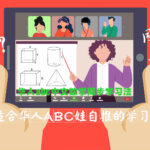College Essay Example #5
This is a college essay that worked for University of Pennsylvania (UPenn).
(Note: Learn about how to get into UPenn)
When I was thirteen and visiting Liberia, I contracted what turned out to be yellow fever. I met with the local doctor, but he couldn’t make a diagnosis simply because he didn’t have access to blood tests and because symptoms such as “My skin feels like it’s on fire” matched many tropical diseases. Luckily, my family managed to drive me several hours away to an urban hospital, where I was treated. Yellow fever shouldn’t be fatal, but in Africa it often is. I couldn’t believe that such a solvable issue could be so severe at the time—so I began to explore.
The exploration led me to the African Disease Prevention Project (ADPP), a non-profit organization associated with several universities. I decided to create the first high school branch of the organization; I liked its unique way of approaching health and social issues. Rather than just raising money and channeling it through third parties, each branch “adopts” one village and travels there to provide for its basic needs. As branch president, I organize events from small stands at public gatherings to 60-person dinner fundraisers in order to raise both money and awareness. I’ve learned how to encourage my peers to meet deadlines, to work around 30 different schedules at once, and to give presentations convincing people why my organization is worth their donation. But overall, ADPP has taught me that small changes can have immense impacts. My branch has helped raise almost $3,000 to build water sanitation plants, construct medical clinics, and develop health education programs in the small village of Zwedru. And the effect doesn’t stop there—by improving one area, our efforts permeate into neighboring villages as they mimic the lifestyle changes that they observe nearby—simple things, like making soap available—can have a big effect. The difference between ADPP and most other organizations is its emphasis on the basics and making changes that last. Working towards those changes to solve real life problems is what excites me.
I found that the same idea of change through simple solutions also rang true during my recent summer internship at Dr. Martin Warner’s lab at UCLA. Dr. Martin’s vision involves using already available digital technologies to improve the individualization of healthcare. By using a person’s genome to tailor a treatment for them or using someone’s personal smartphone as a mobile-monitor to remotely diagnose symptoms, everyday technology is harnessed to make significant strides forward. At the lab, I focused on parsing through medical databases and writing programs that analyze cancerous genomes to find relationships between certain cancers and drugs. My analysis resulted in a database of information that physicians can use to prescribe treatments for their patients’ unique cancerous mutations. Now, a pancreatic cancer patient does not need to be the “guinea-pig” for a prototype drug to have a shot at survival: a doctor can choose the best treatment by examining the patient individually instead of relying on population-wide trends. For the first time in my science career, my passion was going to have an immediate effect on other people, and to me, that was enthralling. Dr. Martin’s lab and his book, Digital Healthcare: A New Age of Medicine, have shown me that changing something as simple as how we treat a disease can have a huge impact. I have found that the search for the holy grail of a “cure for cancer” is problematic as nobody knows exactly what it is or where to look—but we can still move forward without it.
Working with Project ADPP and participating in medical research have taught me to approach problems in a new way. Whether it’s a complex genetic disease or a tropical fever, I’ve found that taking small steps often is the best approach. Finding those steps and achieving them is what gets me excited and hungry to explore new solutions in the future.
College Essay Example #6
This student was admitted to UC Berkeley.
(Note: Learn how to effectively answer UC personal insight questions)
The phenomenon of interdependency, man depending on man for survival, has shaped centuries of human civilization. However, I feel, the youth of today are slowly disconnecting from their community. For the past few years, human connection has intrigued me and witnessing the apathy of my peers has prompted me to engage in various leadership positions in order to motivate them to complete community service and become active members of society.
Less than a year before ninth grade began, my cousin and close friend passed away from cancer, and in the hodge-podge of feelings, I did not emotionally deal with either death. However, a simple tale helped me deal with these deaths and take action.
I was never fully aware of how closely humans rely upon each other until I read The Fall of Freddy the Leaf by Leo Buscaglia in freshman year. The allegory is about a leaf that changes with the seasons, finally dying in the winter, realizing that his purpose was to help the tree thrive. After reading it, I was enlightened on the cycle of life and realized the tremendous impact my actions had on others.
Last year, I joined the American Cancer Society‘s Relay for Life, a twenty-four-hour relay walk-a-thon designed to raise funds for cancer research and create awareness about its early detection. I started a team at school, gathered thirty students and chaperones, and raised $800 for the cause. I watched as each student created friendships with other students on our team and members of the Phoenix community. This year, I let a team in the relay for life again with the schoolwide team of 95 members, and we raised $2,900 for the cure for cancer. At first the group leader ship consisted of only my advisor in me; however, I gained the support of the administrators. I spent well over an hour a day preparing for the event, and it was all worth it!
The Sonora Eagles were students of different grade levels, ethnicities, socioeconomic backgrounds, and educational ability. We joked and played football while volunteering. The most important moment occurred during the night’s luminaria ceremony, during which cancer patients of the past and present were commemorated. Our whole team gathered around, and I asked people to share how they have been affected by cancer. As I went through the crowd, their faces illuminated by candlelight, their cheeks were wet with cleansing tears, I realize the impact I had on them, the purpose I was fulfilling; but most importantly, I realized the impact they had had on me. The Sonora Eagles were my means for dealing with the death of my loved ones to cancer.
The theme for relay for life is a hope for a cure. Through this experience as a leader, I have come to realize, as a community, we hope together, we dream together, we work together, and we succeed together. This is the phenomenon of interdependency, the interconnectedness of life, the pivotal reason for human existence. I have continued this momentum by starting a Sonora High School chapter of American Cancer Society Youth, a club dedicated to youth involvement and several aspects of the American Cancer Society, including the recent Arizona Proposition 45.
Each one of us leaves find a legacy as we for fill our purpose in life. I believe my purpose as a student is to encourage others to become active community members and motivate them to reach new heights. As a student of the University of California, I will contribute my understanding of the human condition and student motivation to help strengthen student relationships within the campus and throughout the community.


